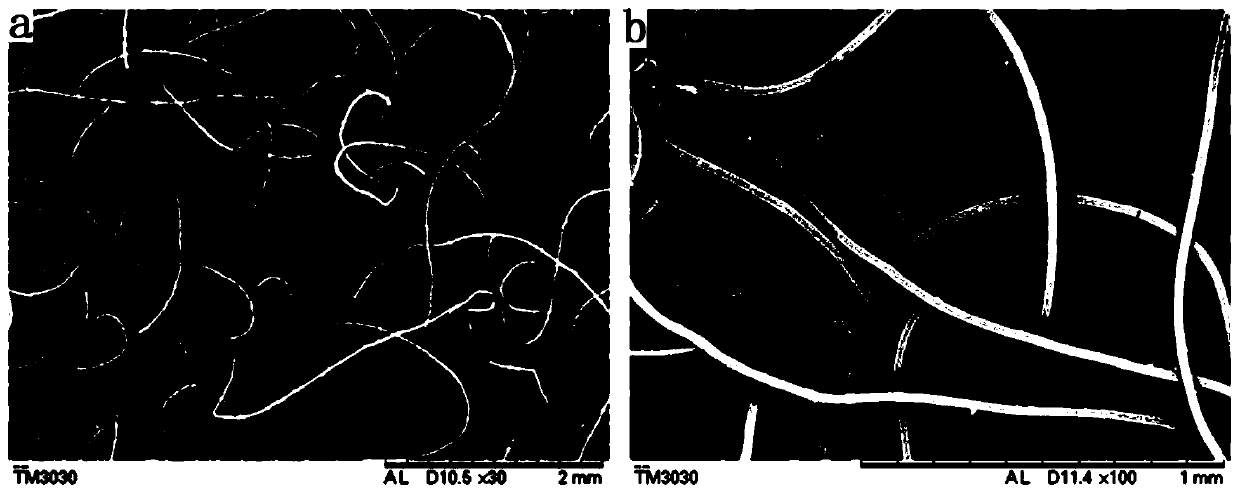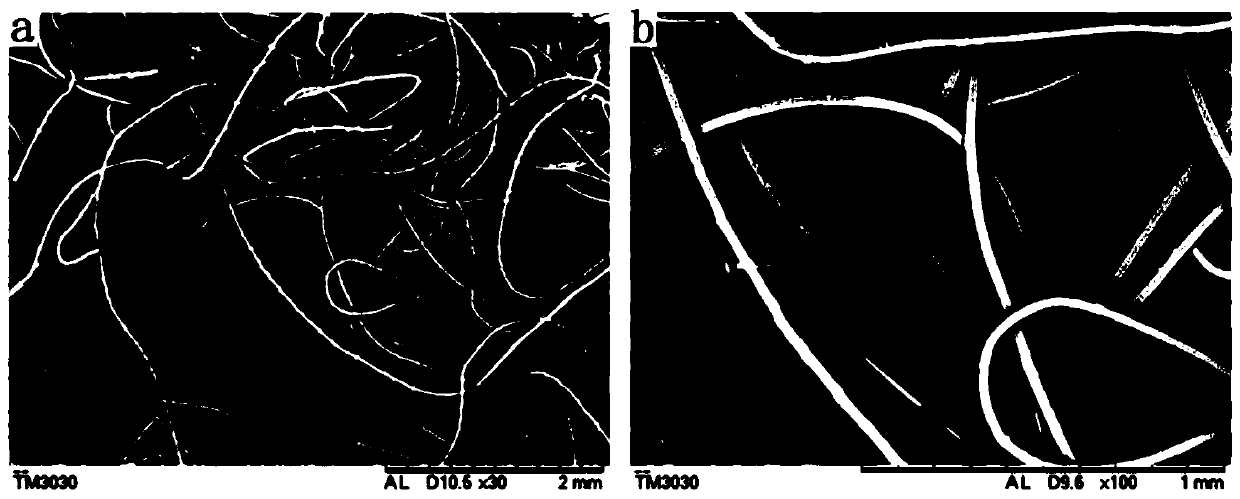Hydrophobic and lipophilic composite needle-punched nonwoven fabric and preparation method thereof
A technology of composite needles and non-woven fabrics, which is applied in non-woven fabrics, textiles and papermaking, and general water supply and conservation, and can solve problems such as poor absorption capacity, unsatisfactory oil absorption rate, and low oil-water separation efficiency, and achieve the effect of preventing water absorption
- Summary
- Abstract
- Description
- Claims
- Application Information
AI Technical Summary
Problems solved by technology
Method used
Image
Examples
Embodiment 1
[0044] (1) Preparation of PET / ES needle-punched non-woven fabric: fully mix PET fiber and ES fiber at a mass ratio of 3:1, and then process the blended fiber by needle punching process: PET / ES Opening and mixing → carding into web → lapper → pre-needling → main needling to obtain PET / ES needle-punched non-woven fabric. In order to increase the strength of the non-woven fabric, the pre-needled material was laminated for main needling, and the power frequency was set to 13Hz.
[0045] (2) Take part of the PET / ES needle-punched non-woven fabric prepared in step (1) for heat-drying treatment, put the sample into an oven, and heat-dry it for 60 minutes at a temperature of 120°C.
[0046] (3) Then use a fluorine-free water repellent aqueous solution with a concentration of 50mL / L to perform water-repellent treatment on the sample that has been heated and baked. The bath ratio of the fluorine-free water repellent aqueous solution to the sample is 10:1-20:1. Process flow: PET / ES need...
Embodiment 2
[0048] Hydrophobic and lipophilic composite needle-punched nonwoven fabrics were prepared according to the method of Example 1, except that in step (1), the mass ratio of PET fibers to ES fibers was 1:1.
Embodiment 3
[0050] Hydrophobic and lipophilic composite needle-punched nonwoven fabrics were prepared according to the method of Example 1, except that in step (1), the mass ratio of PET fibers to ES fibers was 1:3.
PUM
 Login to View More
Login to View More Abstract
Description
Claims
Application Information
 Login to View More
Login to View More - R&D
- Intellectual Property
- Life Sciences
- Materials
- Tech Scout
- Unparalleled Data Quality
- Higher Quality Content
- 60% Fewer Hallucinations
Browse by: Latest US Patents, China's latest patents, Technical Efficacy Thesaurus, Application Domain, Technology Topic, Popular Technical Reports.
© 2025 PatSnap. All rights reserved.Legal|Privacy policy|Modern Slavery Act Transparency Statement|Sitemap|About US| Contact US: help@patsnap.com



